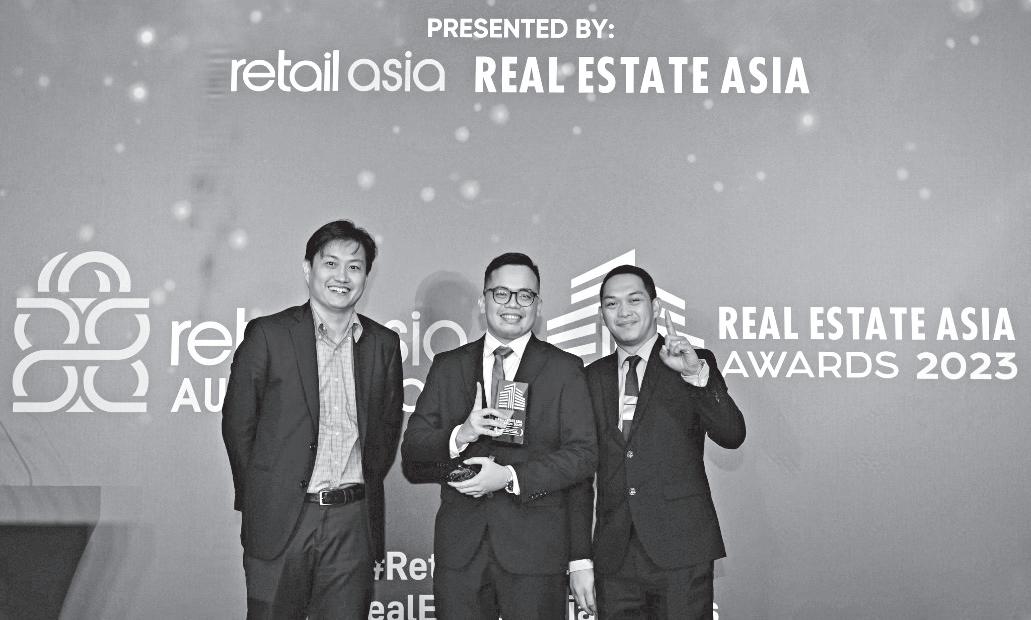
3 minute read
PHirst Park Homes Posts strong Performance desPite Pandemic

By Rizal Raoul S. Reyes
One notable project, the family-centric PHirst Park Homes Batulao in Batangas, was unveiled in June 2020. “This development is easily accessible via three main gateways and is in close proximity to life essentials and tourist attractions in Tagaytay City, offering residents breathtaking views of Taal Lake and Taal Volcano,” the company said in a statement.
Bottom of Form
T H e company is excited to offer the Brenna bungalow unit in PHirst Park Homes, Batulao, which is suitable for extended families with the elderly. It also features amenity nodes focused on traditional Filipino games.
Batulao remains PHirst Park Homes’ most successful project to date, and its residents include Olympic gold medalist Hidilyn Diaz. In recognition of her triumph at the Tokyo Olympic Games in 2021, PHirst Park Homes presented Diaz with a house and lot, aptly named after her. “This gesture exemplifies PHirst Park Homes’ commitment to honoring and celebrating the achievements of its residents,” the company said.
“Its location, panoramic views, and proximity to life essentials and tour - ist attractions make it a first choice for those seeking a convenient, connected, and complete home experience,” the company said. e a ch PPHI development project boasts of essential amenities such as a clubhouse, swimming pool, children’s playground, and basketball court. However, PHirst Park Homes walks the extra mile by providing
Meanwhile, PPHI won the Mid-sized Developer of the Year-Philippines category win at the recently held Real e s tate Asia Awards for its developments in Lipa, San Pablo, Pandi, Calamba, Batulao, Magalang, Gen Trias, Baliwag, Tayabas, Naic, Balanga, and Gapan.
All PPHI projects incorporate the 4C’s principle, which embraces Complete homes, Conceptive amenities, Connectedness to life’s essentials, and a Convenient homebuying experience. This signifies the PPHI commitment to deliver quality and excellence to its projects. To give buyers several options, the company offers a range of product offerings tailored to different family types, including the Calista townhouse cluster, comprising the Calista e n d (corner lot) and the Calista Mid (inner unit), as well as the Unna single attached unit.
Construction expert launches ‘homeqube’ blockchain and AI-powered homebuilding platform
HAILING from a famed Filipino family of architects and contractors, Jose Paolo “JP” Calma, former C e O o f the Multi-Development and Construction Corporation (MDCC), has launched Homeqube, a blockchain and AI-powered homebuilding platform that enables users to design their dream homes through its built-in network of architects, engineers, contractors, suppliers, and manufacturers.

With his extensive background in system architecture and interior construction, Calma’s first-hand perspective of the complex issues within the homebuilding industry prompted him to build a decentralized online platform that makes homebuilding accessible to all.
“Homeqube is designed to solve persistent problems within the industry, such as long lead times, staggering inefficiencies in the design process, the overreliance on human labor, unsustainable raw materials, and not to mention the huge gap between e-commerce and the sector,” Calma said.
The blockchain and AI-powered homebuilding platform features user-centric controls or “knobs” based on a deconstruction philosophy where various combinations of designs can be created from basic system parts. Users can explore cost, lifestyle, and mobility metrics by adjusting these knobs, helping them to make informed home design and building decisions.
Other key features include optical character recognition (OCR) for automatic lot area plotting, agile design, and auto-generation of essential documents before move-in.
Using the platform’s standard QUBe token and gamification approach, users can earn tokens every time their created part and design are recognized and accepted by the Homeqube system, participate in
JP CAlmA design game challenges, and eventually sell their designs as non-fungible tokens (NFTs) once they become community members. extraordinary amenities that enhance the living experience. These include an outdoor cinema, themed parks, a wifi node, a pet park, and a village shuttle, ensuring convenience and connectivity for clients.
As such, the platform also features a Solana-based launchpad and NFT marketplace for homebuilding needs from home designs, home system algorithms, decors, furniture, fixtures, prototypes, and augmented reality (AR) overlays. It is the first NFT marketplace that accepts a wide array of 3D printing files, including parametric data and generative art.
“Drawing on the principles of strategic information architecture and the power of peer collaboration, Homeqube revolutionizes the industry. There’s no need for traditional e-commerce ‘add to cart’ processes. With our platform, we introduce an innovative approach where commercial satisfaction can be achieved through engaging and interactive experiences. We’re also paving the way for seamless fiat ramping,” the Homeqube C e O s aid.
According to Calma, the platform serves as a hub for industry professionals, from manufacturers and engineers to interior designers and plumbers, where they can enrich their practices or kickstart their businesses.
Opportunities outside Metro Manila
PPHI’s thrust in developing projects outside the National Capital Region is on the right track.
According to its research Residential Survey, Colliers Philippines recently said that 55% of respondents are planning to buy a house-and-lot or lot-only unit outside Metro Manila for their next residential investment. “In our view, horizontal developments in key provinces remain viable options among investors and endusers particularly those who are looking for larger living and open spaces in less dense locations,” it said.

The implementation of the government’s infrastructure program and the growing business opportunities in the countryside will be an impetus for national and homegrown developers to expand their residential footprint outside Metro Manila. “Developers should actively monitor which price segments are the most attractive amongst buyers in their target locations,” it said.








